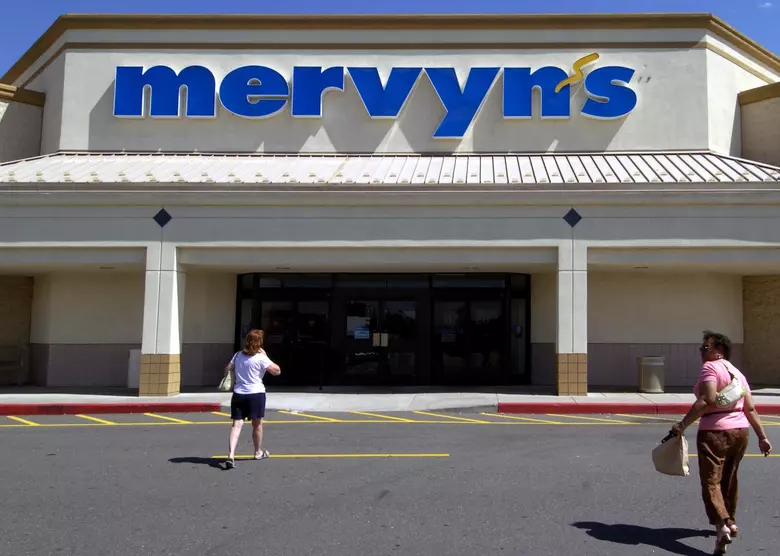Mervyns was once a household name in American retail. Known for affordable fashion and family-focused shopping, it carved out a strong place in suburban malls and shopping centers across the United States. But for many, the question still lingers—what happened to Mervyns?
In this post, we’ll explore the full story of Mervyns—from its rise to prominence to its ultimate closure. Whether you’re a curious shopper, retail enthusiast, or someone reminiscing about weekend trips to the mall, this guide offers a detailed, clear, and engaging look at the Mervyns legacy.
The Origins of Mervyns: Where It All Began:
The story of Mervyns starts in 1949 in San Lorenzo, California, when Mervin G. Morris opened his first store. His vision was simple but powerful—offer quality clothing and household items at moderate prices. His strategy? Eliminate unnecessary frills and focus on value. That philosophy helped Mervyns stand out in a crowded marketplace.
By the 1970s, Mervyns had already become a strong regional player, known for its practical, everyday fashion. The name changed slightly from “Mervin’s” to “Mervyns” to resolve a legal dispute, but the brand remained strong.
Mervyns in Its Prime: A Retail Powerhouse:
The 1980s and 1990s were golden years for Mervyns. The store expanded rapidly across the western and southern United States. It became a key tenant in shopping malls, especially in California, Texas, and Arizona.
Mervyns appealed to middle-class families. It was the go-to store for back-to-school clothes, home essentials, and affordable fashion. The store’s success attracted attention, and in 1978, retail giant Dayton Hudson Corporation—the same company that owned Target—acquired Mervyns. The acquisition gave the chain a boost in resources and distribution.
Mervyns was praised for its efficient operations, customer service, and loyalty to budget-conscious consumers. It had something for everyone—children’s clothing, men’s basics, women’s fashion, shoes, and even small appliances.
The Downfall of Mervyns: What Went Wrong?
Despite its earlier success, Mervyns faced increasing pressure from emerging competitors. Discount chains like Walmart and Kmart offered lower prices. Meanwhile, stores like Target and Kohl’s began capturing style-conscious consumers with better branding and marketing.
Several strategic missteps contributed to Mervyns’ decline:
-
Outdated Branding: Mervyns didn’t evolve fast enough. While others updated store designs, merchandise, and shopping experiences, Mervyns remained largely the same.
-
Lack of Innovation: There was little effort to develop a strong online presence or loyalty program during the rise of e-commerce.
-
Ownership Changes: In 2004, Target Corporation sold Mervyns to a private investment group. The new owners focused more on real estate assets than retail operations. Cost-cutting led to layoffs, reduced inventory quality, and declining customer service.
By 2008, under mounting debt and declining sales, Mervyns filed for Chapter 11 bankruptcy. Within months, it transitioned to Chapter 7 liquidation, leading to the closure of all remaining 149 stores. French Maid: History, Costume, and Cultural Impact Explained
Mervyns’ Closure: A Sudden Goodbye:
For many loyal shoppers, the closure of Mervyns came as a shock. Malls lost anchor tenants. Employees lost jobs. And consumers lost a reliable source for everyday shopping.
The bankruptcy not only marked the end of an era for Mervyns—it also symbolized the broader challenges faced by mid-tier retailers trying to compete in a rapidly changing market.
Mervyns tried to restructure. There was even a brief attempt at relaunching the brand under “Mervyns California” in 2009, but it never regained traction.
Mervyns Today: Is There Any Hope for a Comeback?
While the physical stores are long gone, the Mervyns brand name still holds nostalgic value. In 2009, the Mervyns website briefly relaunched as an online retail hub, but it eventually went offline again.
The trademark and domain rights have exchanged hands a few times, but no serious revival has been successful. Today, Mervyns lives on primarily in memory—as part of a retail era that was simpler, local, and family-centered.
Social media pages, nostalgic articles, and Reddit threads often mention Mervyns with fondness. It’s not just about shopping; it’s about the memories—trying on school clothes, buying gifts, and walking the aisles with your parents.
Why Mervyns Still Matters in Retail History:
Mervyns’ story serves as a case study in retail evolution. It teaches us that:
-
No brand is too big to fail
-
Failure to innovate leads to obsolescence
-
Customer loyalty must be nurtured with evolving experiences
Many brands today, like JCPenney, Sears, and even Bed Bath & Beyond, face similar crossroads. Learning from the fall of Mervyns can help them avoid the same fate.
Lessons for Modern Retailers:
If you’re in the retail space today, the lessons from Mervyns are clear:
-
Keep up with technology and e-commerce trends
-
Refresh your brand and store layout regularly
-
Focus on customer experience and digital engagement
-
Adapt quickly to changing consumer behavior
Mervyns failed not because people stopped shopping, but because it stopped evolving with them.
FAQs About Mervyns:
Q: When did Mervyns go out of business?
A: Mervyns filed for bankruptcy in 2008 and closed all remaining stores by early 2009.
Q: Who owned Mervyns?
A: Mervyns was owned by Target Corporation until 2004, then sold to a private equity group.
Q: Can I shop at Mervyns today?
A: No, the stores are permanently closed, and the brand has no active online presence.
Conclusion:
The end of Mervyns marked the close of a significant chapter in American retail. For decades, it was more than just a department store—it was a trusted name, a weekend destination, and a key part of suburban life.



